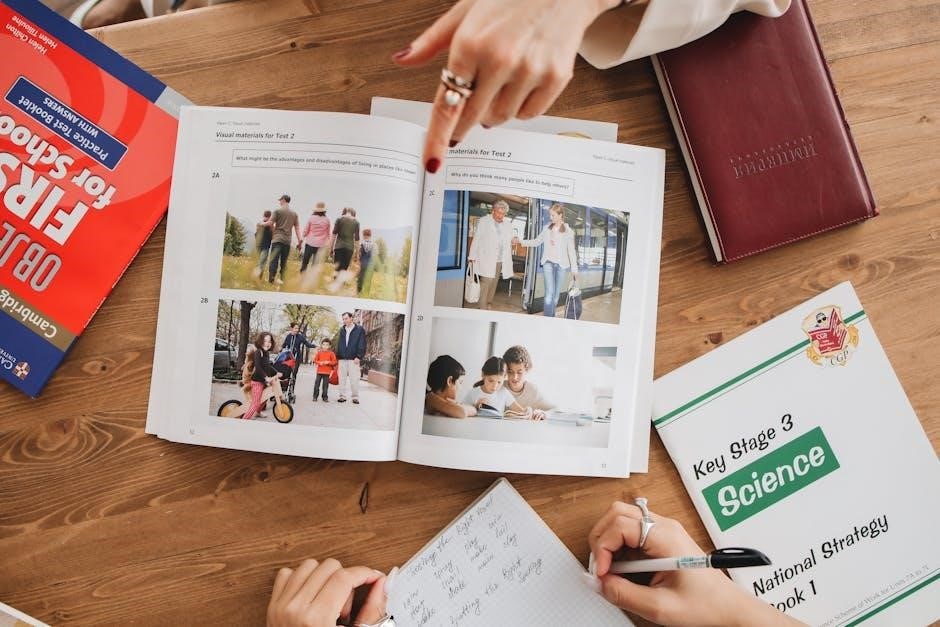Sewing is a timeless skill offering creativity and practicality. This beginner-friendly curriculum introduces foundational techniques‚ tools‚ and projects‚ building confidence and inspiration for newcomers to sewing.
1.1. Understanding the Basics of Sewing
Understanding the basics of sewing involves mastering fundamental stitches‚ fabric types‚ and essential tools. These skills form the foundation for all sewing projects‚ allowing beginners to create simple yet functional items. Sewing is a versatile skill accessible to everyone‚ offering both practicality and creativity. Regular practice helps build confidence‚ leading to more complex creations and a lifelong enjoyment of sewing.
1.2. Importance of Sewing Skills for Beginners
Sewing is a practical and creative skill offering numerous benefits. It fosters self-reliance‚ saves money through repairs‚ and provides an outlet for artistic expression. Beginners develop problem-solving abilities and patience while creating functional or decorative items. Sewing is accessible to all‚ promoting personal growth and a sense of accomplishment. It also encourages sustainability by extending the life of clothing and textiles‚ making it a valuable skill for everyday life.
1.3. Overview of the Beginner Sewing Class Curriculum
The curriculum is designed to guide beginners through foundational sewing skills. It covers essential tools‚ machine operation‚ basic stitches‚ and fabric handling. Students progress from simple projects like tote bags to more complex tasks‚ ensuring a comprehensive understanding of sewing techniques. The structured approach emphasizes hands-on learning‚ allowing participants to build confidence and creativity while mastering practical sewing applications.

Essential Sewing Tools and Materials
Essential sewing tools and materials include sewing machines‚ fabric‚ thread‚ scissors‚ pins‚ measuring tools‚ and basic notions. These are fundamental for any sewing project.
2.1. Must-Have Hand Tools for Sewing
Essential hand tools for sewing include sharp scissors‚ pins‚ a pincushion‚ a tape measure‚ a seam ripper‚ a thimble‚ and embroidery hoops. These tools ensure precision‚ safety‚ and efficiency in sewing. Sharp scissors are vital for cutting fabric accurately‚ while pins and a tape measure help in aligning patterns and measuring fabrics. A seam ripper is handy for correcting mistakes‚ and a thimble protects fingers from needle pricks. Embroidery hoops aid in hand-stitching‚ and hand-sewing needles are indispensable for finishing seams or repairs.
2.2. Understanding Sewing Machine Parts and Accessories
Understanding your sewing machine is crucial for beginners. Key parts include the bobbin‚ presser foot‚ needle‚ spool pins‚ stitch selector‚ and tension dials. Accessories like extra bobbins‚ needles‚ and specialty feet (e.g.‚ zipper or hemming feet) enhance functionality. Familiarizing yourself with these components ensures proper machine operation and helps you tackle various sewing tasks efficiently. Always refer to your machine’s manual for specific guidance on its parts and accessories.
2.3. Fabric and Notions for Beginner Projects
For beginner sewing projects‚ cotton fabric is ideal due to its ease of use and forgiving nature. Other suitable fabrics include polyester blends and linen. Essential notions include thread‚ zippers‚ buttons‚ and interfacing. Always choose quality materials to ensure durability and professional finishes. Start with basic colors and patterns to avoid overwhelming yourself. Proper fabric and notion selection will enhance your sewing experience and project outcomes.
2.4. Essential Supplies for a Beginner’s Sewing Kit
A well-stocked sewing kit is crucial for beginners. Start with sharp scissors‚ straight pins‚ and a seam ripper. Include a measuring tape‚ sewing gauge‚ and iron for precise work. Add basic threads‚ hand-sewing needles‚ and machine needles. Optional items like interfacing and zippers expand your project range. Organize supplies in a portable case for easy access. These essentials will help you tackle various sewing tasks with confidence.
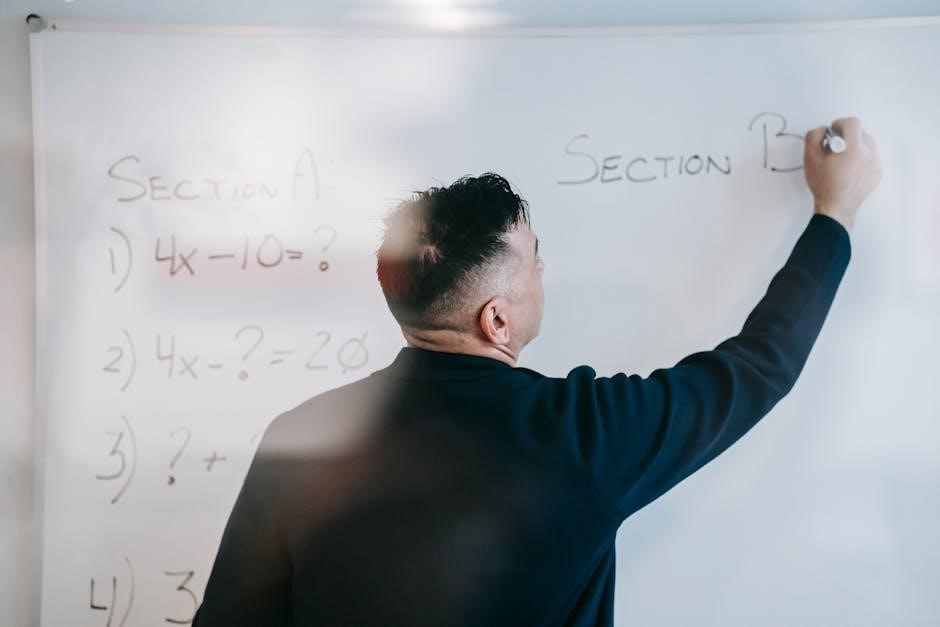
Basic Sewing Techniques
Mastering fundamental sewing techniques is essential for beginners. Learn threading machines‚ basic hand stitches‚ and understanding fabric grain. Practice straight stitching‚ backstitching‚ and proper seam finishing for polished results.
3.1. Threading and Using a Sewing Machine
Threading a sewing machine correctly is crucial for smooth operation. Start by placing the spool on the pin‚ guiding the thread through the tension discs‚ and leaving a small loop. Pass the thread through the take-up lever and insert it into the needle. Ensure the machine is properly plugged in and test the stitch length and width. Always refer to the manual for specific machine models. Practice threading and basic operation to build confidence.
3.2. Learning Basic Stitches and Their Applications
Mastering basic stitches is essential for beginners. Start with the straight stitch for simple seams and the backstitch for securing. Practice the medium stitch for general sewing and the stretch stitch for knits. Learn when to use each stitch type‚ such as the zigzag for finishing raw edges. Understanding stitch lengths and tensions ensures professional results. Practice on scrap fabric to build confidence and precision in your stitching techniques.
3.3. Understanding Fabric Grain and Alignment
Fabric grain refers to the direction of the warp threads in woven fabric. Understanding grain is crucial for accurate cutting and sewing. The straight grain runs parallel to the selvedge‚ while the cross grain is perpendicular. Proper alignment ensures stability and prevents distortion. Always cut patterns along the grain line to maintain fabric integrity and achieve professional results. Misaligned fabric can stretch or skew‚ affecting the final project’s quality and fit.
3.4. Pressing and Finishing Seams Properly
Pressing seams is essential for a polished finish. Use an iron at the appropriate temperature for your fabric to flatten seams. Always press seams before sewing over them. Finishing seams prevents fraying and adds durability. Techniques like zigzag stitching‚ serging‚ or using seam binding are common. Proper pressing and finishing ensure a professional result and extend the life of your sewing projects. Clear instructions guide beginners through these critical steps.

Fabric Identification and Selection
Fabric identification and selection are crucial skills for beginners. Understanding fabric types‚ textures‚ and uses ensures proper material choice for projects‚ enhancing results and durability.
4.1. Types of Fabrics for Beginner Sewing Projects
Cotton‚ polyester‚ and blends are ideal for beginners due to their ease of use and versatility. Muslin is great for practice‚ while knits are suitable for those ready to explore stretch fabrics. These fabrics are soft‚ durable‚ and forgiving‚ making them perfect for learning essential sewing techniques without frustration.
4.2. How to Read Fabric Labels and Care Instructions
Fabric labels provide essential info like fiber content‚ care symbols‚ and shrinkage rates. Understanding these helps in selecting the right fabric for projects. Care instructions guide washing‚ drying‚ and ironing methods. Always check for pre-washing recommendations to avoid shrinkage or color bleeding. Knowing these details ensures proper fabric handling and maintains the quality of your sewing projects. This knowledge is crucial for beginners to achieve professional results.
4.3; Choosing the Right Fabric for Your First Projects
Beginners should start with fabrics that are easy to handle‚ like cotton or polyester blends. Consider the project’s purpose‚ as different fabrics suit different uses. Light- to medium-weight fabrics are ideal for practice. Avoid delicate or stretchy materials initially. Match fabric texture and drape to the desired outcome. Always pre-wash fabrics before cutting to ensure shrinkage is accounted for. This step ensures a smooth sewing experience and professional-looking results.
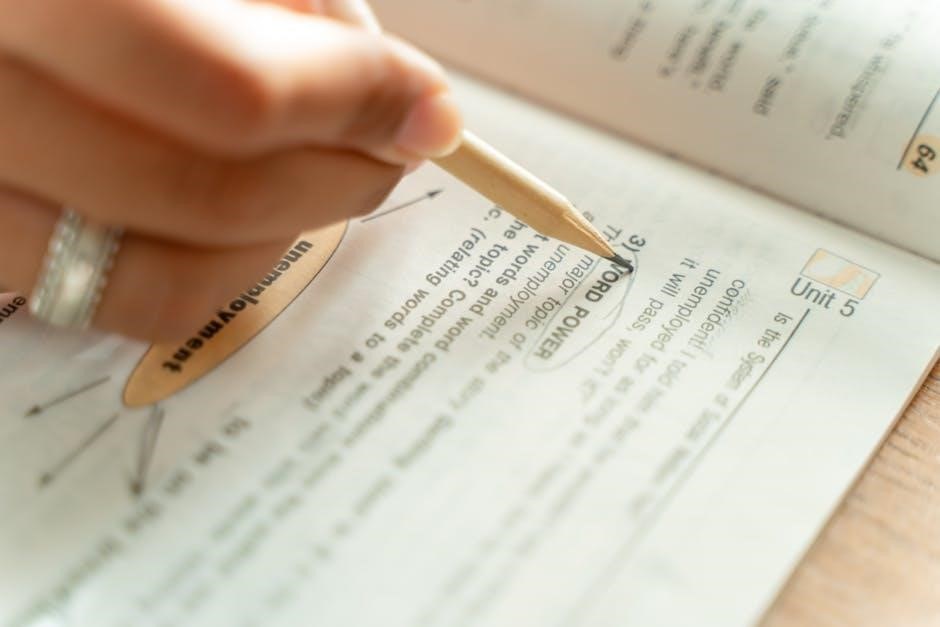
Simple Sewing Projects for Beginners
Start with easy-to-make items like tote bags‚ pillowcases‚ and elastic waist skirts. These projects build foundational skills and confidence‚ progressing from simple to more complex tasks.
5.1. Tote Bags: A Great First Project
Tote bags are an excellent first project for beginners‚ requiring only straight-line sewing and basic tools. They teach measuring‚ cutting‚ and stitching skills while introducing fabric handling. Simple patterns and durable materials make them ideal for practice. Start with sturdy fabric like canvas or cotton. Add pockets or straps for functionality. This project builds confidence and provides a practical item for daily use‚ encouraging creativity from the start.
5.2. Sewing a Straight Line: Pillowcases and Napkins
Sewing pillowcases and napkins is a perfect way to master straight-line stitching. These projects teach accurate measuring‚ fabric alignment‚ and hemming techniques. Start with lightweight fabrics like cotton or linen. Learn to handle fabric edges‚ match thread colors‚ and achieve clean finishes. Simple patterns and quick results make these projects motivating. They introduce beginners to working with squares and rectangles‚ building confidence in basic sewing skills and precision.
Sewing an elastic waist skirt is an excellent introduction to garment sewing. This project teaches measuring‚ fabric selection‚ and straight stitching. Beginners learn to work with waistband elastic and create a flattering‚ adjustable fit. Lightweight fabrics like cotton or rayon are ideal. The project builds confidence in garment construction and introduces techniques like hemming and casing. It’s a quick‚ rewarding way to create wearable items and explore garment sewing basics.

Safety and Best Practices in Sewing
Safety guidelines protect you from accidents while sewing. Keep fingers away from needles‚ use sharp tools cautiously‚ and ensure proper workspace setup. Stay alert and organized.
6.1. Safety Tips for Using Sewing Machines
Always keep loose clothing and long hair tied back while sewing to avoid entanglement. Ensure the workspace is well-lit and free from distractions. Use the correct presser foot for the fabric type and maintain a steady fabric flow. Never touch the needle or bobbin with your fingers. Turn off the machine when not in use or changing parts. Regularly inspect and maintain the machine to prevent malfunctions. Keep children and pets away while sewing. Use the power cord safely and avoid overloading the machine. Properly store accessories like needles and bobbins to prevent accidents. Always follow the manufacturer’s guidelines for usage and maintenance to ensure safe operation. By adhering to these practices‚ you can minimize risks and enjoy a safe sewing experience.
6.2. Proper Posture and Workspace Setup
Always sit up straight with feet flat on the floor and adjust your chair to keep the sewing machine at elbow height. Ensure your workspace is well-lit to avoid eye strain and keep essential tools within easy reach. Maintain a clutter-free area to prevent accidents and distractions. Store sharp objects safely and organize fabrics to avoid tripping hazards. Regularly clean your workspace to keep it efficient and safe for sewing activities.
6.3. Avoiding Common Mistakes for Beginners
Beginners often make mistakes like incorrect fabric alignment‚ uneven stitching‚ or using the wrong needle size. To avoid these‚ always pre-wash fabrics‚ use the right tools‚ and follow pattern instructions carefully. Practice on scrap fabric before working on actual projects. Regularly check thread tension and ensure the sewing machine is properly threaded. Start with simple projects and gradually increase complexity as skills improve. This helps build confidence and reduces errors.
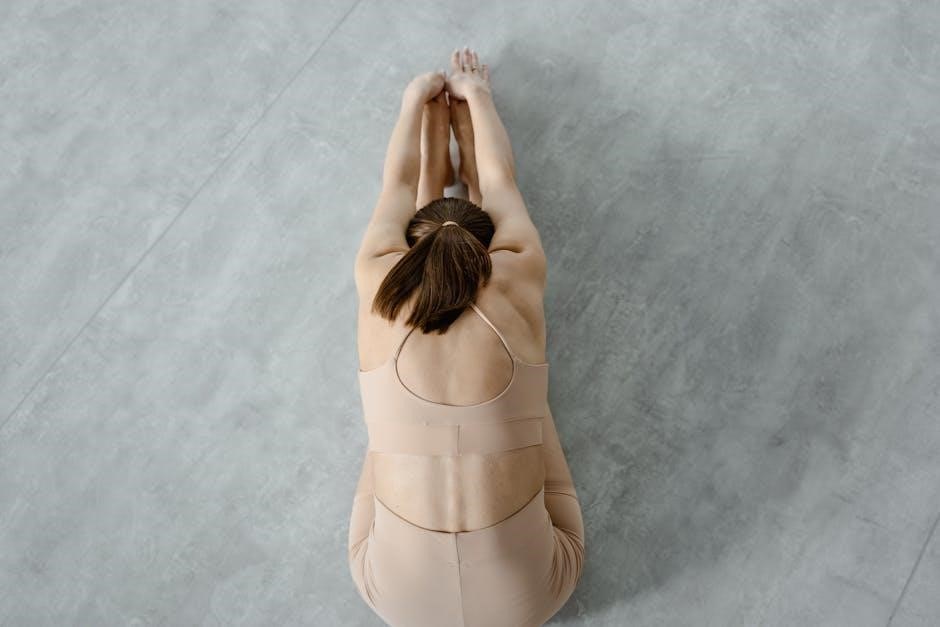
Troubleshooting Common Sewing Issues
Identify and resolve issues like uneven stitches‚ thread breakage‚ or fabric misalignment. Check machine tension‚ thread direction‚ and needle size. Regularly clean and maintain your machine.
7.1. Fixing Uneven Stitches and Tension Problems
Uneven stitches often result from incorrect tension settings or improper threading. Check the machine’s tension dials and ensure the thread is correctly threaded through the tension discs. Using the wrong needle size or type can also cause issues. To fix‚ re-thread the machine‚ adjust tension settings‚ and test on scrap fabric. Consult your machine’s manual or a mentor for guidance. Proper tension ensures even‚ professional-looking stitches.
7.2. Dealing with Fabric Stretch or Distortion
Fabric stretch or distortion can ruin a project. Use stabilizers like interfacing or staystitching to prevent stretching. Choose the right needles‚ such as ballpoint or stretch needles‚ for knits. Use a walking foot or Teflon foot for slippery fabrics. Handle fabric gently to avoid distortion. Cut patterns accurately and use a rotary cutter for precision. Always prewash fabric to minimize shrinkage and ensure stability during sewing.
7.3. Tips for Reversing Mistakes and Ripping Seams
Identify mistakes early to avoid complications. Use a seam ripper carefully to remove stitches without damaging fabric. Work slowly‚ ripping one stitch at a time. For small mistakes‚ a magnifying glass can help precision; Avoid pulling fabric while ripping seams‚ as it may stretch or tear. Press fabric after reversing to restore shape. Never sew over mistakes—rip them out completely for professional results.

Learning Resources and Support
Utilize sewing books‚ online tutorials‚ and communities for guidance. Attend workshops or join sewing classes for hands-on experience. Mobile apps and experienced mentors can also provide valuable support.
8.1. Recommended Sewing Books for Beginners
Start with “The Complete Book of Sewing” by Reader’s Digest‚ offering clear guides for beginners. “Sewing for Dummies” by Claire Schaeffer provides step-by-step instructions; “Gertie’s New Book for Better Sewing” by Gretchen Hansen focuses on vintage techniques. These books cover basics‚ patterns‚ and projects‚ making them essential for building foundational sewing skills and confidence in the beginner sewing class curriculum.
8.2. Online Tutorials and Sewing Communities
Enhance your learning with online resources like YouTube tutorials‚ offering visual guides for beginners. Platforms like Craftsy and Udemy provide structured sewing courses. Join online communities such as Reddit’s r/sewing for feedback and support. Follow sewing blogs and accounts on Pinterest or Instagram for inspiration and tips. These digital tools complement the beginner sewing class curriculum‚ ensuring continuous learning and improvement.
8.3. The Role of a Sewing Instructor or Mentor
A sewing instructor or mentor provides personalized guidance‚ helping beginners master techniques and troubleshoot challenges. They offer feedback on projects‚ ensuring proper execution and understanding of skills. Instructors also share tips‚ industry insights‚ and resources‚ fostering confidence and creativity. Their support is invaluable for overcoming obstacles and staying motivated‚ making them a key component of a successful beginner sewing class curriculum.
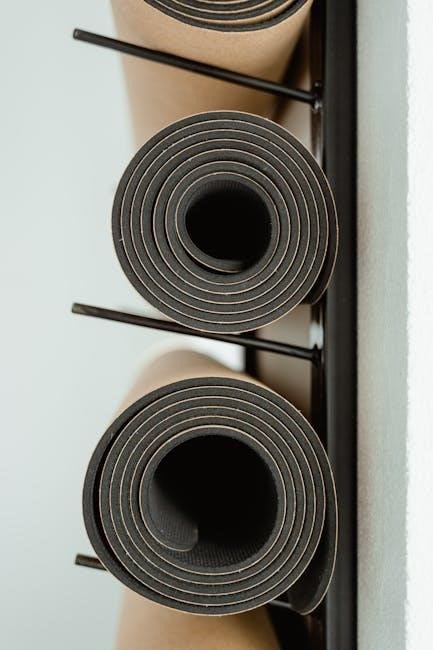
Final Project and Course Completion
The final project allows students to apply learned skills‚ culminating in a completed sewn item. Course completion celebrates progress and readiness for independent sewing.
9.1. Planning Your Final Sewing Project
Planning your final sewing project involves selecting a pattern‚ choosing fabrics‚ and setting a timeline. Students review their skills to ensure the project aligns with their abilities. Instructors guide the selection process‚ ensuring the project is both challenging and achievable. Key considerations include fabric requirements‚ tool availability‚ and time management. This step builds confidence and prepares students for independent sewing. Proper planning ensures a successful outcome.
9.2. Presenting Your Work and Receiving Feedback
Presenting your final project allows you to showcase your skills and creativity. Instructors and peers provide constructive feedback‚ highlighting strengths and areas for improvement. This step fosters confidence and helps refine techniques. Feedback is given respectfully‚ focusing on technical aspects and design choices. Students learn to receive criticism positively and use it for future projects. This shared experience builds camaraderie and celebrates progress in the beginner sewing class curriculum.
9.3. Celebrating Your Progress and Achievements
Celebrating your progress is a key part of the beginner sewing class curriculum. Recognizing milestones‚ no matter how small‚ boosts motivation and confidence. Reflecting on your journey from the first stitch to completed projects highlights growth. Sharing achievements with peers fosters a sense of community and pride in your work. This celebration reinforces the joy of learning and encourages continued creativity in sewing.
Congratulations on completing the beginner sewing class! You’ve mastered foundational skills‚ built confidence‚ and created meaningful projects. Use this momentum to pursue advanced techniques and explore new sewing opportunities.
10.1. Recap of Key Skills Learned
In this curriculum‚ you’ve mastered essential sewing skills‚ including threading machines‚ basic stitches‚ fabric alignment‚ and seam finishing. You’ve also learned to identify fabrics‚ use tools‚ and complete simple projects like tote bags and pillowcases. These foundational skills provide a strong base for future sewing endeavors.
10.2. Encouragement for Continuing Sewing Journey
Embrace your newfound sewing skills and continue exploring creativity. Set small goals to practice regularly‚ experimenting with new techniques and fabrics. Join sewing communities for inspiration and support. Celebrate progress‚ no matter how small‚ and remember that persistence improves mastery. Sewing is a lifelong skill that offers endless opportunities for personal expression and practicality. Keep stitching and enjoy the journey of creating something truly unique!
10.3. Resources for Advanced Sewing Classes
For further growth‚ explore advanced sewing classes online or locally. Platforms like Craftsy‚ Udemy‚ and Skillshare offer detailed courses. Local colleges or community centers may provide specialized workshops. Consider enrolling in pattern-making or tailoring classes for deeper skills. Invest in advanced sewing books or eBooks for self-study. Join workshops focused on specific techniques‚ like embroidery or quilting. Continuous practice and exploration will refine your expertise and broaden your creative possibilities.
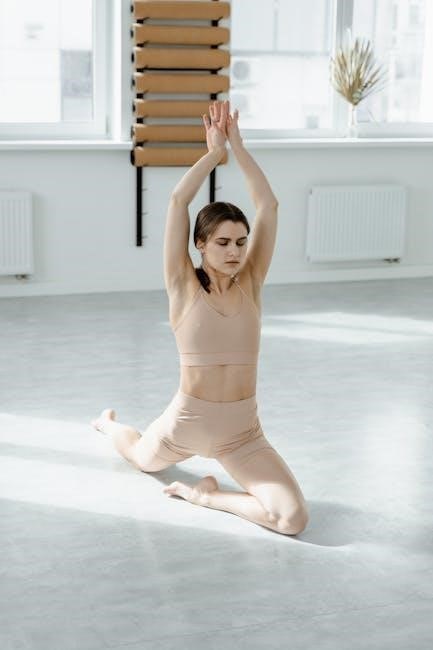
Additional Resources and Materials
Explore online sewing communities‚ video tutorials‚ and printable guides. Utilize sewing apps for pattern-making and fabric calculators. Build a library of sewing books and inspiration boards for continuous learning.
11.1. Printable Sewing Patterns for Beginners
Discover a variety of free and affordable printable sewing patterns designed for beginners. Websites like Craftsy and Etsy offer simple designs for tote bags‚ pillowcases‚ and elastic waist skirts. These patterns often include step-by-step instructions and measurements. Print them at home and adjust sizes as needed. Perfect for practicing basic sewing skills and completing projects efficiently. Start with simple patterns to build confidence and gradually move to more complex designs.
- Find patterns specifically labeled for beginners.
- Ensure your printer is set to the correct scale.
- Use them to practice stitching and fabric handling.
11.2. Sewing Apps and Digital Tools
Enhance your sewing journey with apps like Sewing Buddy‚ Sewing Calculator‚ and Craftsy. These tools offer tutorials‚ stitch guides‚ and project planning features. Apps like Fabric Calculator help estimate material needs‚ while Sewing Companion provides tips for common techniques. Digital tools are perfect for on-the-go learning and organization‚ making sewing more accessible and enjoyable for beginners.
- Download apps for tutorials and stitch guides.
- Use fabric calculators for accurate measurements.
- Access project planners to stay organized.
11.3. Building a Sewing Library and Inspiration Board
Curate a sewing library with essential books‚ patterns‚ and magazines. Start with basics like The Complete Book of Sewing and Sewing for Dummies. Create an inspiration board using fabric swatches‚ sketches‚ and photos of finished projects. Organize digital files and patterns in labeled folders. Personalize your space with a vision board to spark creativity and track progress‚ making sewing more enjoyable and goal-oriented.
- Collect foundational sewing books and patterns.
- Organize digital and physical resources neatly.
- Display inspiration to motivate your sewing journey.
